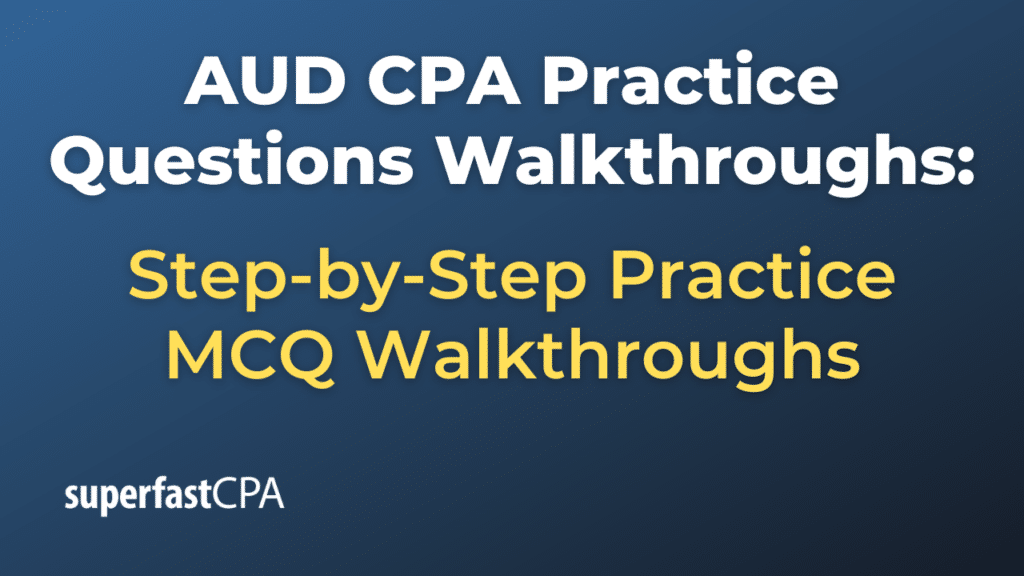On this page you’ll find free AUD CPA practice question walkthroughs on topics from the AICPA CPA exam blueprints for the AUD exam.
AUD I: Ethics, Professional Responsibilities, and General Principles
A1
A2
A3
B
C1
C2
D1
D2
E
F1
G
AUD II: Assessing Risk and Developing a Planned Response
A1
A2
B1
Remembering and Understanding: Understand the business cycles (trough, expansion, peak, recession) and leading, coincident and lagging indicators of economic activity (e.g., consumer price index, producer price index, federal funds rate, bond yields, unemployment).
C1
C2
C3
C4
Remembering and Understanding: Understand the differences between SOC 1® and SOC 2® engagements.
D1
Application: Calculate materiality for an entity’s financial statements as a whole.
D2
E
F
G1
G2
G3
G4
AUD III: Performing Further Procedures and Obtaining Evidence
A1
A2
A3
B
C
D1
Application: Use observation and inspection to obtain evidence.














